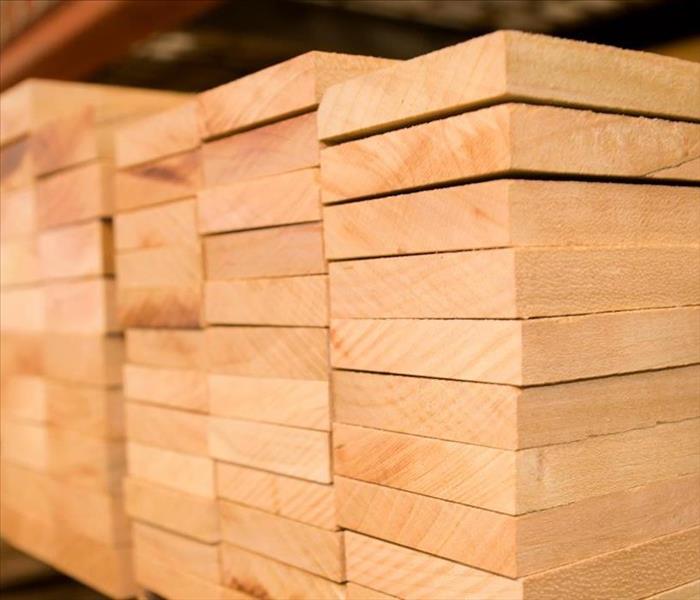How Hurricane Recovery Could Be Impacted by Lumber and Labor
5/31/2022 (Permalink)
 The cost of shipping lumber over long distances is difficult because of limited access to transport systems after a hurricane
The cost of shipping lumber over long distances is difficult because of limited access to transport systems after a hurricane
Hurricane recovery presents numerous challenges for the lumber and labor industry. Historically, lumber has been a vital component in many disaster areas as it is long-lasting and can be easily repaired when damaged. The industry has made significant efforts to ensure that wood materials are readily available in hurricane-affected areas during post-storm cleanup and reconstruction. In many cases, the cost of shipping these materials over long distances is difficult because of limited access to railroads or other transport systems after an event such as a hurricane.
How Hurricane Recovery Could Be Impacted by Lumber and Labor
1. High Prices for Materials Due to Outreach
Hurricane Michael was one of the costliest and most destructive hurricanes ever hit the United States. The most significant impact was along the Florida panhandle, which experienced high winds and torrential rains. Some estimates place the damage as high as $25 billion. This storm strengthened significantly before landfall, resulting in widespread devastation throughout a large geographic area.
2. Shortage of Lumber in Post-Storm Cleanup
During post-storm cleanup, lumber is used to repair damaged structures, and access is limited because many roads are impassable due to debris, fallen power lines, and flooding. Lumber is also used to construct temporary housing, set up shelters, and provide other necessities such as furniture and countertops. This limited supply of lumber must contend with high demand while being transported to help rebuild structures after a hurricane.
3. High Prices for Labor
Labor is required to rebuild structures, clear debris, and debris piles, repair infrastructure, and restore essential services such as electricity in the aftermath of a storm. Many disabled people need support during this period. Expanding the number of individuals employed in a wide range of age groups will help meet this labor demand.
4. Limited Population to Meet Demands
Many people affected by a hurricane are elderly or disabled, which means they cannot be relied upon to rebuild their homes and lives. Temporary housing is a temporary solution, which leads to the need for additional resources as the disaster area continues to rebuild services such as electricity.
5. Limited Availability of Labor Resources
Labor resources are usually located throughout the nation in professional debris removal and building trade companies. Unfortunately, many of these companies were destroyed in the hurricane and subsequent flooding. These companies may experience shortages of trained labor because many workers are now unable to work due to an inability to support themselves paycheck-to-paycheck due to demolished businesses or other factors affecting personal finances during the response period.
6. Logistics and Transportation
Trains and pipelines and roads and bridges may also be damaged after a hurricane. These road, rail, and water systems provide significant access to goods in disaster areas, resulting in the need for resources usually used to transport these goods. In extreme cases, transportation usually is delayed for several days before one can make repairs and goods can be transported.
Hurricane recovery is a critical period during which the lumber and labor industries play a significant role. Due to the economic impacts of past hurricanes, most consumers are willing to pay higher prices for materials and services to rebuild structures as soon as possible.





 24/7 Emergency Service
24/7 Emergency Service